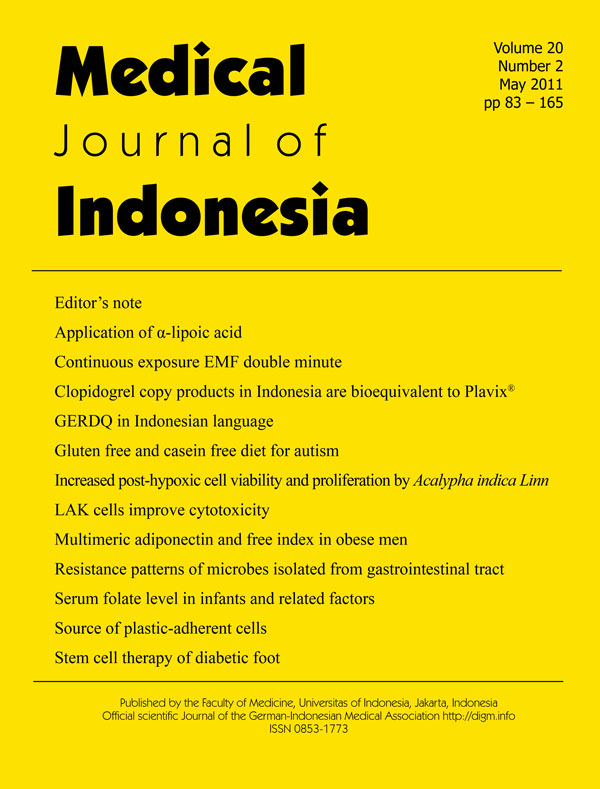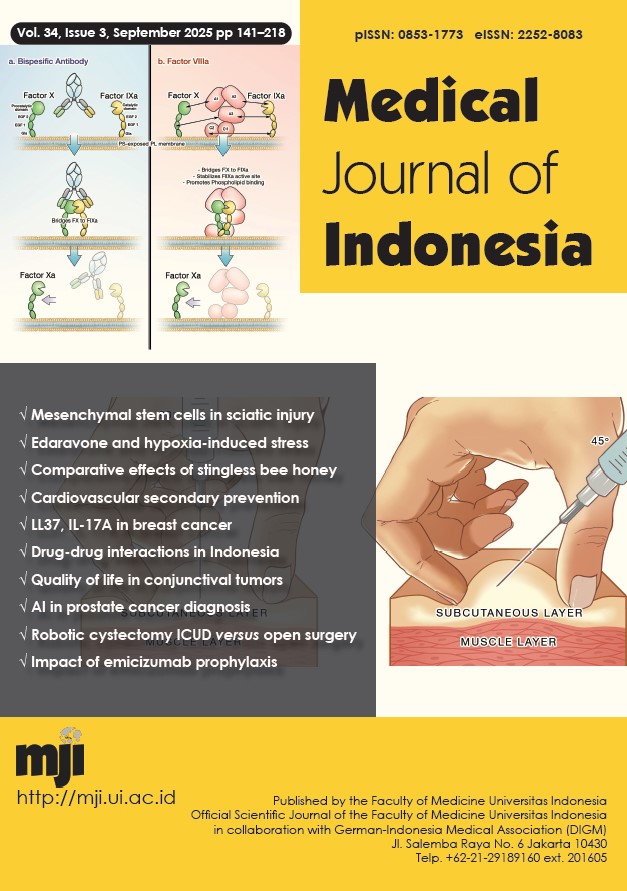Stem cell therapy in diabetic foot patients: where are we now?
DOI:
https://doi.org/10.13181/mji.v20i2.444Keywords:
diabetes mellitus, endothelial progenitor cells, peripheral arterial disease, stem cells, therapeutic angiogenesisAbstract
Diabetic foot (DF) occurs as a concomitant illness of diabetes mellitus (DM). DM is one of the main causes of nontraumatic amputation in Germany with severe peripheral arterial disease (PAD) with critical limb ischemia (CLI) being of major concern. Although modern techniques are available surgical vascularisation and percutaneous intervention are limited. This problem leads increasing numbers of limb amputations in patients with diabetes mellitus. The physiological process of angiogenesis, vasculogenes is and arteriogenesis contribute to the growth of collateral vessels in response to obstructive arterial disease causing limb ischemi. In clinical practice the endogenous angiogenic response is often impaired. Therapeutic angiogenesis is an application of biotechnology to stimulate new vessel formation via local administration of pro-angiogenic growth factors in the form of recombinant protein, or gene therapy, or by implantation of progenitor cells or stem cells that will synthe size multiple angiogenic cytokines. This review summarises the endothelial function and dysfunctionin DM, the mechanism of homing, the transplantation method and the status of clinical trials in stem cell field to treat limb ischemia. (Med J Indones 2011; 20:154-60)
Keywords: diabetes mellitus, endothelial progenitor cells, peripheral arterial disease, stem cells, therapeutic angiogenesis
Downloads
Downloads
Published
How to Cite
Issue
Section
License
Authors who publish with Medical Journal of Indonesia agree to the following terms:
- Authors retain copyright and grant Medical Journal of Indonesia right of first publication with the work simultaneously licensed under a Creative Commons Attribution-NonCommercial License that allows others to remix, adapt, build upon the work non-commercially with an acknowledgment of the work’s authorship and initial publication in Medical Journal of Indonesia.
- Authors are permitted to copy and redistribute the journal's published version of the work non-commercially (e.g., post it to an institutional repository or publish it in a book), with an acknowledgment of its initial publication in Medical Journal of Indonesia.






































